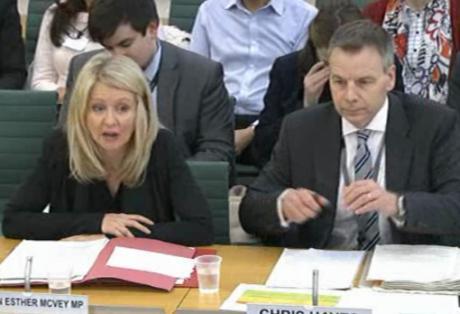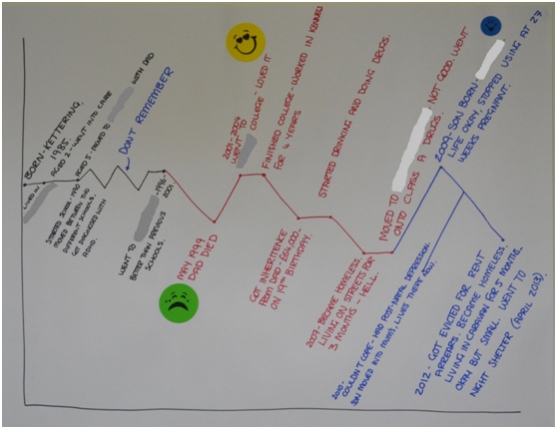Vickie Cooper, Lecturer in Criminology
In July 2014, a member of the Disability News Service sent a Freedom of Information Inquiry to the Department of Work and Pensions (DWP), asking it to reveal mortality statistics on those who have died while in receipt of benefits and/or while serving a benefit sanction. Typically, Ian Duncan Smith, head of the DWP refused, claiming that the DWP does not review such cases. However, after mounting pressure, including an ongoing petition and pressure from within the House of Commons itself, it was subsequently revealed that the DWP carried out 49 – 60 reviews of people who died while claiming benefits. In a separate but recent review by the House of Commons Work and Pensions Committee, the government claims that it found “‘no particular case’ in which a ‘benefit sanction alone’ had directly led to the death of a benefit claimant”, but conceded that in 33 of those cases, the procedure could have been improved. This review makes recommendations that the DWP should conduct a system for formal death inquiries where an individual dies ‘whilst in receipt of that benefit’. This system, it is recommended, should be comparable to the Independent Police Complaints Commission, where death inquiries are made upon public request.
This particular Freedom of Information request is critical for thinking beyond the poverty implications of austerity, as it forces us to think more about the violent and harmful implications. A sharp rise in suicide mortality across those economies most impacted by austerity suggests that these post-crash economies are having particularly violent and harmful affects. Here in the UK, reports of ‘benefits-related suicides’ are being brought to our attention thick and fast. Perhaps the most familiar benefit-related suicide, one that raised much media attention, was the suicide of Stephanie Bottrill, from Solihul, near Birmingham. Following a thirty-minute assessment, the housing authority concluded that Stephanie Bottrill would have to pay an additional weekly fee for her spare bedroom. In her suicide note, Stephanie Bottrill blamed the government for causing her such stress.
Accused of failing in its duty of care towards disabled people, a death inquest led to various speculations as to why Stephanie Bottrill committed suicide. As such, Stephanie Bottrill’s history of mental health issues were called into question and were used to undermine the political significance of her death – as though the harms of austerity are any less significant or political when they impact upon those with mental health issues. A spokesperson in defence of the council responsible for making Stephanie Bottrill’s assessment claimed that she was in a ‘situation’, living in a house, ‘that the government policy said was too big so she would have to pay a spare room subsidy’. The coroner passed a verdict that Stephanie Bottrill committed suicide due to ‘stress and anxiety’ and no local authority or government official was reviewed and/or policy implementation revised. But the biggest twist in the tale is that Stephanie Bottrill may have been exempt from paying bedroom tax. According to the pre-1996 exemption rule, any adult or family member living in the property before 1996, are exempt from paying bedroom tax. Stephanie Bottrill had been living in her accommodation since 1995.
Esther McVey and Chris Hayes during Parliamentary Inquiry into benefit-related suicides. Photo: screengrab, BBC Democracy Live
We know from Durkheim’s seminal study Suicide, that economic crises are often followed by a rapid rise in numbers of suicide mortality. However, the rise in suicide mortality is not as a result of encroaching poverty levels, but the extent to which economic crises disturb the ‘collective order’. And nothing quite disturbs a sense of order like citizens being evicted from their homes and further displaced from those communities they once inhabited. The psychological and physical responses to welfare policies in this post-crash period is not the fact that individuals and communities now find themselves destitute and on the margins, but the means by which it is done and the disorder that ensues.
While increasing suicide mortality is one way for us to think about austerity as harmful and violent, perhaps it is not indicative enough of the violent and harmful impacts of austerity. Durkheim reminds us that:
“those who kill themselves through automobile accidents are almost never recorded as suicides; those who sustain serious injuries during an attempt to commit suicide and die weeks or months later of these injuries or of inter-current infections are never registered as suicides; a great many genuine suicides are concealed by families; and suicidal attempts, no matter how serious, never find their way into the tables of vital statistics.”
The problem with relating suicide mortality with social injury caused by economic crises, is that many of the harmful and violent outcomes are hidden and multifarious: the suicides that are recorded are only the tip of the iceberg.
Austerity as Organized Violence
Another way to think about the harm and violence of austerity is to pay more attention to those bureaucracies and organizations challenged with the task of enforcing it. Since 2010, the welfare reforms have encompassed a whole range of assessments for determining new thresholds of eligibility, with the aim of removing people from their benefits entitlement. Benefit claimants have been forced to make the transition from old benefit entitlements, to new ones; with new rules, new measures of entitlement, new guidance frameworks and more strict sanctions for those claimants who fail to adhere to these new rules. In this transition, claimants have had to undergo new benefits assessments such as Personal Independence Payment (PIP), Employment and Support Allowance (ESA), Spare-room Subsidy (bedroom tax) and Job Seeker’s Allowance (JSA).
These new thresholds of entitlement and eligibility, and the volume of assessments they entail, should not be underestimated as we think about how austerity is violently enforced through bureaucracies and organizations. Putting these new measures of eligibility in motion, the government and local authorities have recruited a number of private companies to administer the new rules of eligibility. Companies such as Experian, A4e, ATOS, Maximus and Capita have all been recruited to assess and process millions of benefit claimants. Where authorities claim that these companies ‘improve the quality’ of their assessment process, individuals assessed by them would most likely claim the opposite. A government inquiry into the standard of assessments made by the company Atos, revealed that 41 per cent of face-to-face assessments ‘did not meet the required standards’. When A4e set unattainable targets to reduce the number of people claiming employment seeker’s allowance, staff members resorted to ‘numerous offences of fraud’ in order to remove people from their benefit entitlement. Such offences involved ‘tricking’ claimants into carrying out job-search activities that, as a result of learning difficulties, they could not complete and were subsequently sanctioned. Although privatisation plays a significant part in the violent enforcement of austerity, local authorities have also been reprimanded for conducting benefit assessments unlawfully.
So how we can we think of these bureaucratic practices as organized violence? Mainstream policy analyses frequently dismiss the political significance of administrators of eligibility and entitlement as technical systems that separate ‘the deserved’ poor from ‘the undeserved’. But history tells us a more compelling story about the role of bureaucracy and organizations for enforcing and legitimating a violent political order.
Systems of classification and eligibility have a long history in shaping society and political relations. At worst, repressive regimes have relied upon bureaucracies to enforce formal eligibility rules to disqualify and deny citizens access to fundamental rights – often relegating them to ‘stateless’ and ‘non-human’ identities. The Apartheid regime in South Africa began with the classification and reclassification of race that enabled the state to organize the violent expulsion of certain racial and ethnic groups and deny citizens their most basic rights. Similarly, Hannah Arendt observed that the perpetrators of the Holocaust were not atypical monsters, but mundane bureaucrats, as demonstrated in her analysis of the Adolf Eichmann trials.
These violent histories raise two key points for thinking about austerity as bureaucratized and organized violence. First, they reveal the manner in which violent political orders are legitimated at the bureaucratic level and second, how bureaucracies are necessary for reconfiguring socio-economic relations through systems of ‘entitlement’. These relations often include: property relations, race relations, class relations, family relations, gender relations, geographical relations and state-citizen relations.
And austerity serves as something of a peculiar model in this process. Austerity and the bureaucratic means by which it comes to be enforced is about reconfiguring social relations. Here, gender-relations and new benefit rules are a good case in point. With Universal Credit (which amalgamates six benefit and tax credits) claims are made on households, not individuals. The Women’s Budget Group argues that the design of Universal Credit – with its system of joint assessment, joint ownership and joint income – reshapes gender relations as it reinforces the ‘single breadwinner model’, a model that has disadvantaged women throughout history. In reshaping gender relations, Universal Credit is positioning women in harmful positions as it allows for abusive male partners to centralise and control household finance. Financial abuse is a common source of power and violence that is exercised over women and Universal Credit simply gives the abuser more money and more opportunity to control. This comes on top of overwhelming evidence from Women’s Aid showing that the provision of domestic violence specialist services and hostel accommodation available for women, is diminishing directly as a result of local authority cuts.
Clearly, the government is failing in its duty to promote gender equality and protect women from harm and violence.
In this post-crash period, the war on the poor has resulted in various social injuries including debt, child poverty, evictions, homelessness, self-harm and suicide. Hell-bent on the idea that removing people from their basic entitlements can restore economic order, the government is throwing people onto unknown margins in order reduce the budget deficit. But justifying this level of harmful and violent economic policy – as a means to an end, to reduce deficit budget – does not wash. Austerity is not a means to an end, but a long-term strategy by which governments are violently and legitimately disrupting the rights of citizens. As Hannah Arendt put it, violence is rarely a means to an end, but a power structure and political order that ‘outlasts all aims’.
It is worth paying closer attention to the rising levels of psychological and physical harms affecting young people as the next round of welfare reforms will disproportionately affect young people. With the new welfare reform bill, the Conservative government looks set on excluding young people between 18-21 years old from housing benefit entitlement (who are also claiming Job Seeker’s Allowance). Despite homeless charities ferociously ringing alarm bells showing how these policies will result in homelessness, the government wants young people to ‘earn or learn’. And bureaucracies will play a key role in enforcing these new rules as it begins to assess and remove approximately 20,000 young people from this benefit entitlement.
This blog first appeared at Open Democracy on 10 August 2015, at https://www.opendemocracy.net/ourkingdom/vickie-cooper/austerity-as-bureaucratized-and-organized-violence





